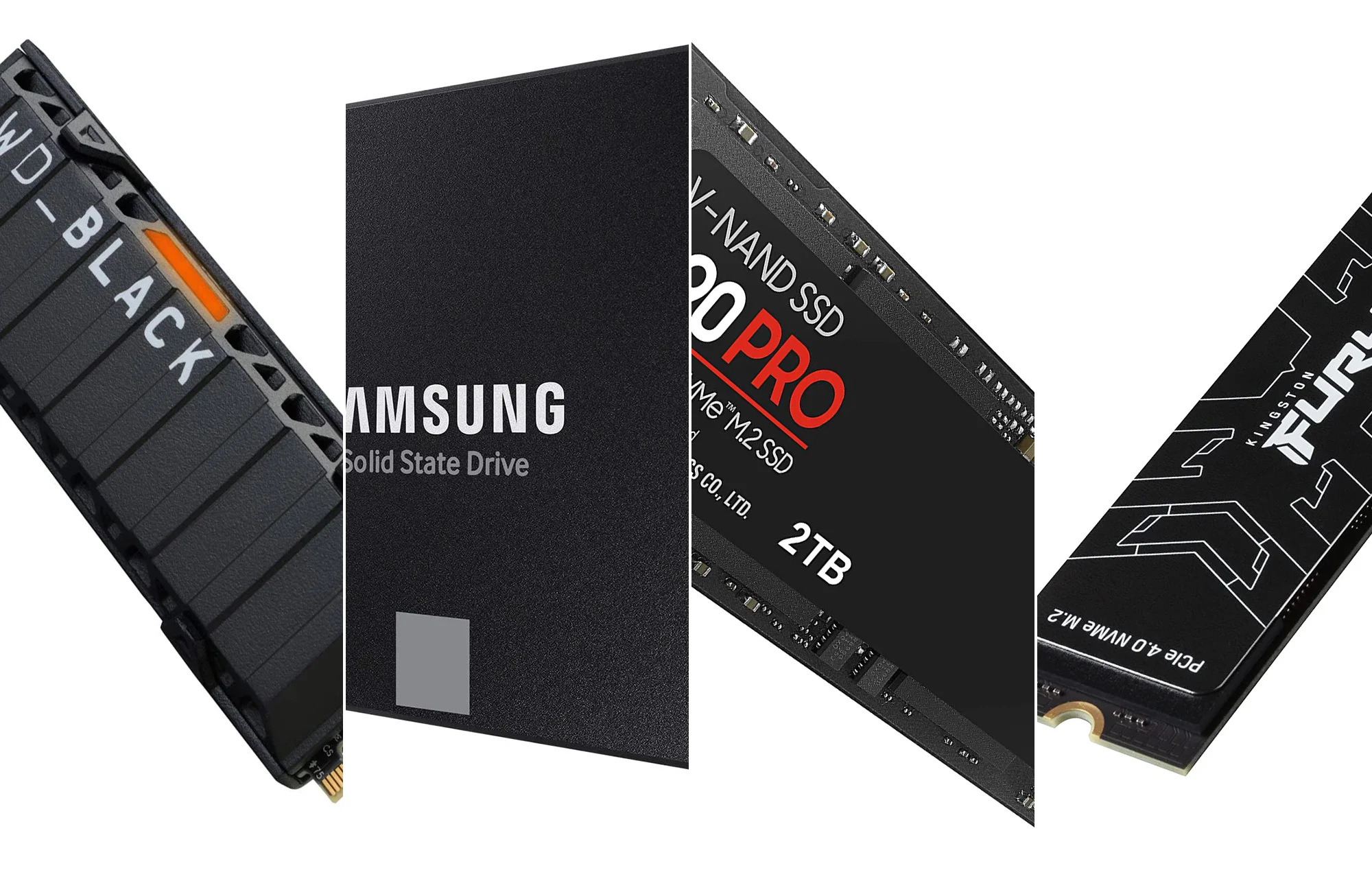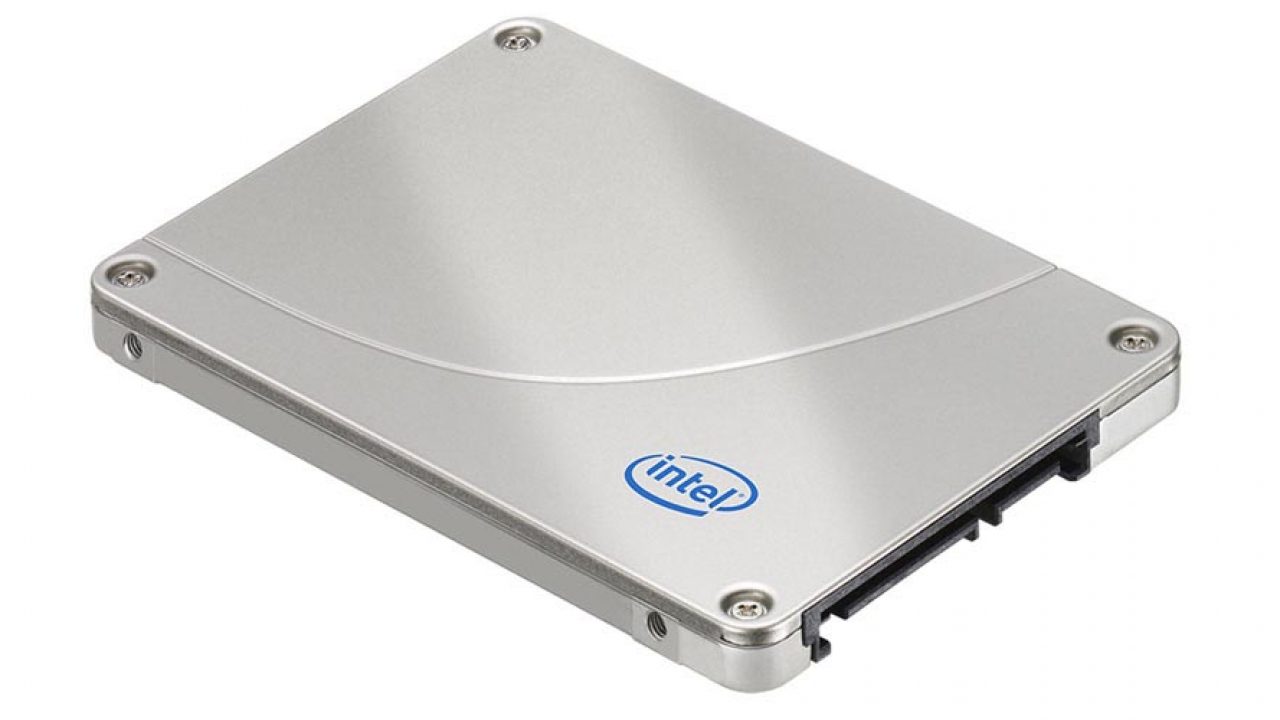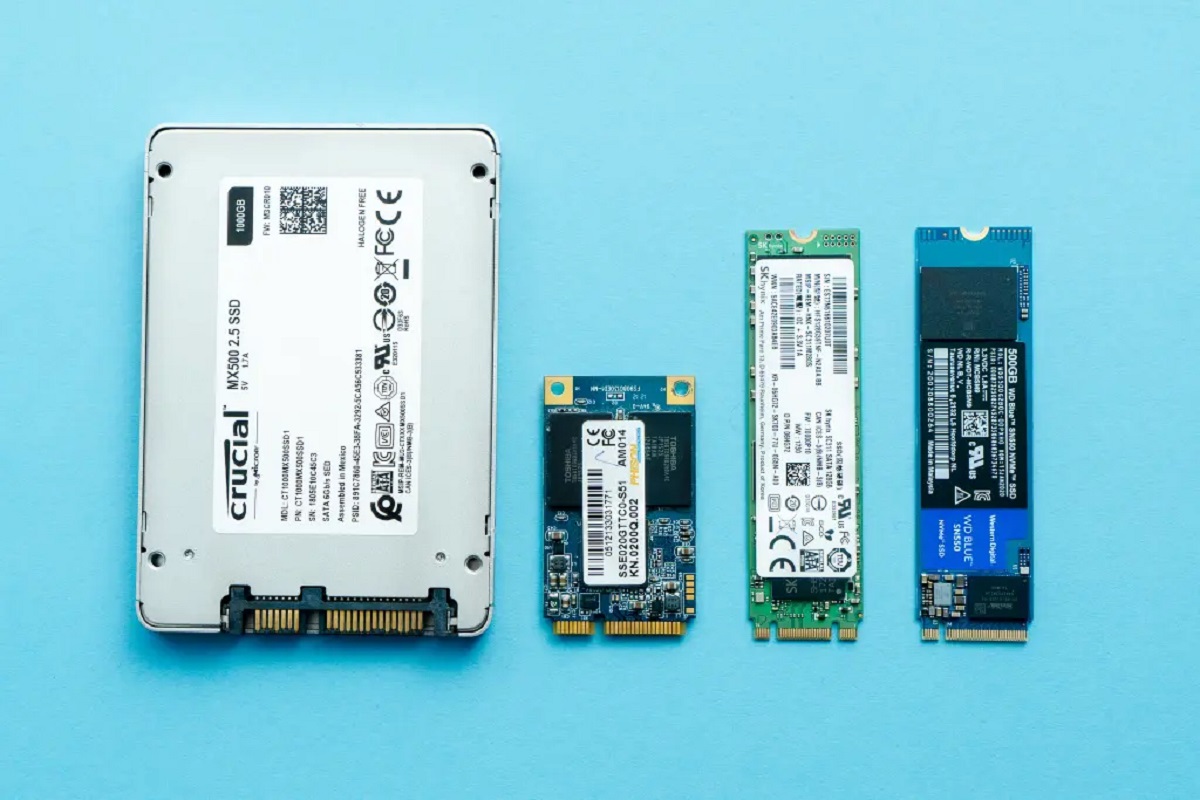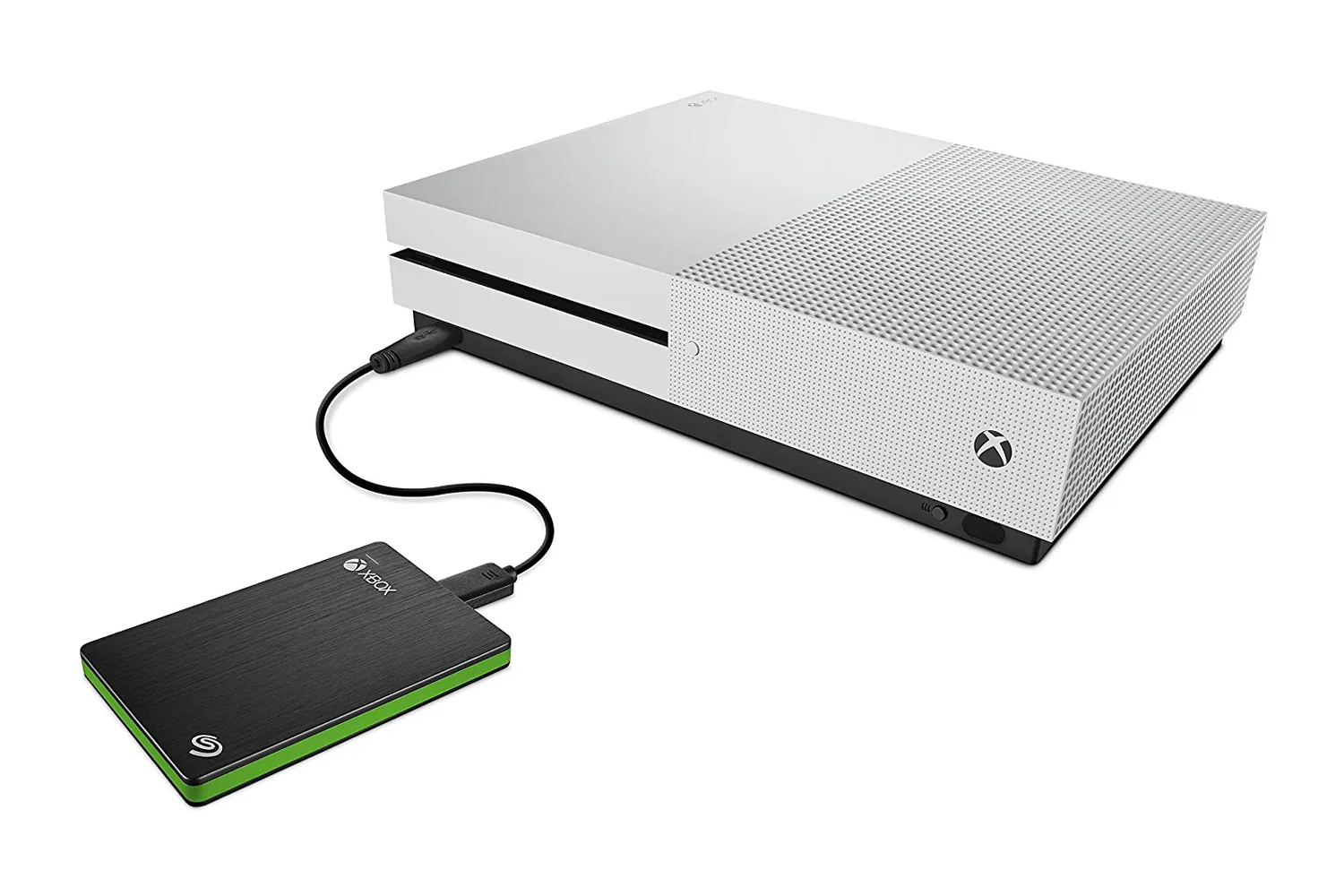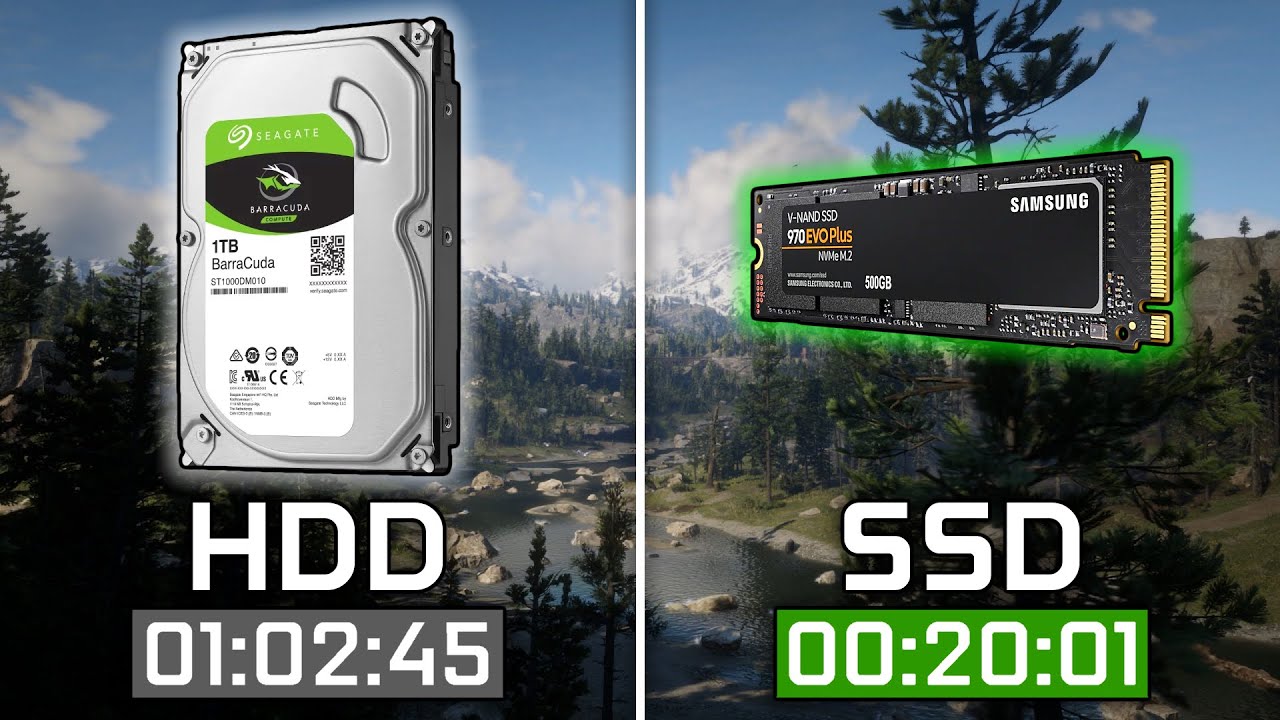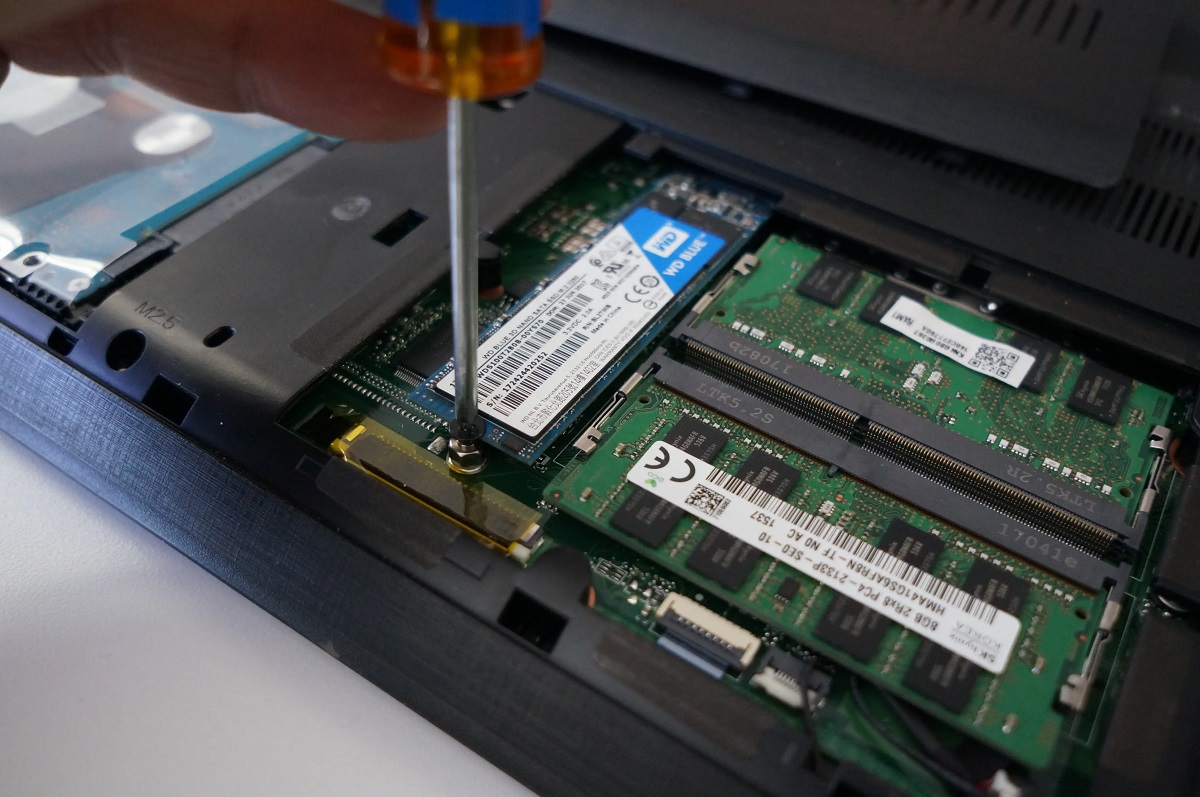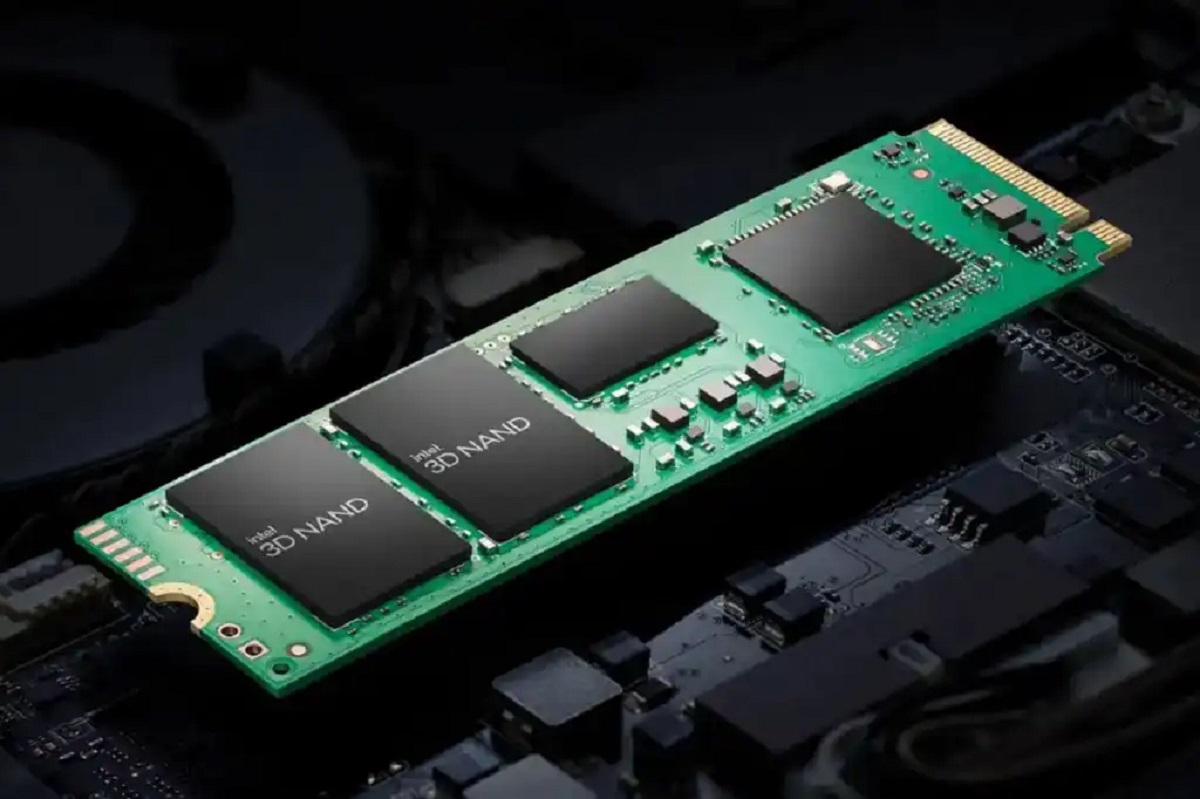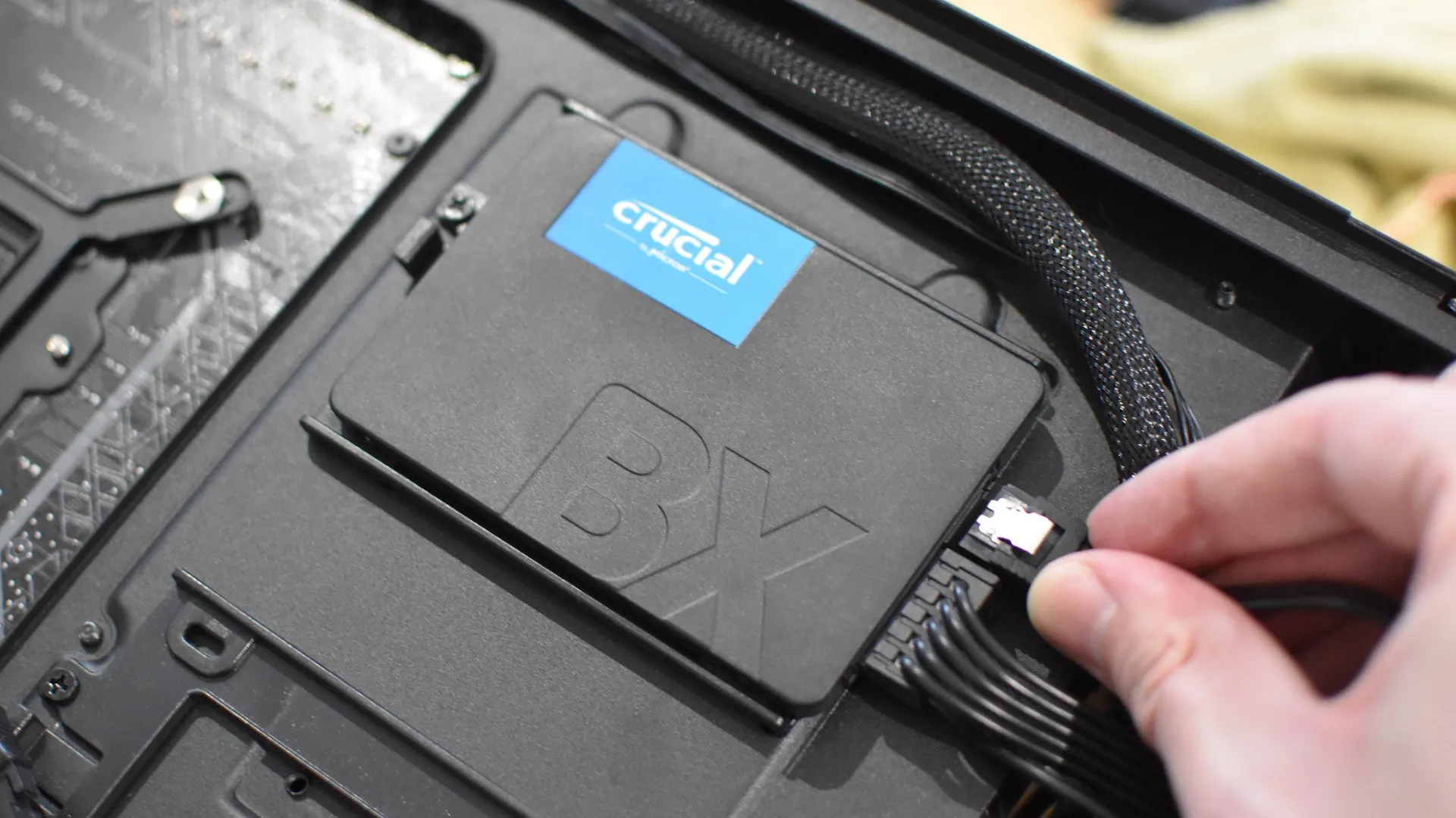Introduction
As technology continues to evolve, so too do the storage options available to us. One of the most significant advancements in recent years has been the introduction of Solid State Drives (SSD). These devices have revolutionized the way we store and access data, offering faster performance, improved reliability, and enhanced durability compared to traditional hard drives.
In this article, we will explore the world of SSDs and delve into the reasons why they’re becoming increasingly popular among computer users. We’ll discuss how an SSD works, the benefits it brings, and how its speed compares to that of a traditional hard drive. Additionally, we’ll examine the factors that affect SSD speed and the real-life performance gains one can expect when using an SSD in various applications.
By the end of this article, you’ll have a clear understanding of what an SSD is and why it has become such an essential component in modern computing. So, let’s dive in and explore the incredible speed and performance gains that SSDs bring to the table.
What is an SSD?
A Solid State Drive (SSD) is a type of data storage device that uses integrated circuit assemblies to store data persistently, without the need for mechanical components such as spinning disks or moving heads. Unlike traditional hard drives, which rely on magnetic storage, SSDs use flash memory technology to store data electronically. This technology enables faster data transfer speeds, improved reliability, and increased durability.
SSDs are designed to mimic the form and function of traditional hard drives, making them compatible with existing computer systems and peripherals. They come in various form factors, including the familiar 2.5-inch drives that can be easily installed in laptops and desktops, as well as smaller M.2 and PCIe-based drives commonly used in ultrabooks and high-performance gaming rigs.
One of the key components of an SSD is the controller, which manages data flow between the host computer and the flash memory. The controller plays a crucial role in determining the overall performance of the SSD, including read and write speeds, data encryption capabilities, and error correction mechanisms.
Another important component of an SSD is the NAND flash memory. This non-volatile memory is made up of cells that store electrical charges to represent binary data. There are different types of NAND flash memory, including single-level cell (SLC), multi-level cell (MLC), and triple-level cell (TLC), each offering a different balance of cost, performance, and endurance.
Overall, an SSD offers numerous advantages over traditional hard drives, including faster boot times, quicker application launches, and shorter file transfer times. The absence of moving parts also makes SSDs more resistant to physical damage from shocks or vibrations. These benefits have made SSDs the preferred choice for users seeking improved performance and reliability in their computing devices.
How an SSD Works
Understanding how an SSD works requires a closer look at its internal components and the process of data storage and retrieval. Unlike traditional hard drives, which store data magnetically on spinning disks, SSDs use a combination of electronic components to store and retrieve data.
At the heart of an SSD lies the NAND flash memory, which is organized into blocks and pages. Each block is made up of multiple pages, and each page can store a certain amount of data. To write data to the NAND flash memory, the SSD controller sends electrical charges to the appropriate cells, setting their state to represent binary data.
To retrieve data from the SSD, the controller reads the electrical charges stored in the NAND flash memory cells. This process involves measuring the voltages across the cells to determine the stored data. The retrieved data is then made available for the host computer to access.
One important aspect of SSD functionality is wear-leveling. As data is written and erased over time, certain cells in the NAND flash memory may wear out faster than others. To prevent premature failure of the SSD, wear-leveling algorithms evenly distribute data writes and erases across the entire memory, ensuring that all cells wear out at a similar rate.
Another key concept in SSD operation is trim, which helps improve performance. When a file is deleted or modified, the SSD marks the corresponding blocks as available for new data to be written. However, the actual removal of the data from the NAND flash memory is delayed to optimize performance. When the SSD is idle, it performs a trim operation, which physically erases the marked blocks, readying them for new data. This process helps maintain optimal performance and extends the lifespan of the SSD.
The SSD controller plays a crucial role in managing data flow between the host computer and the NAND flash memory. It handles tasks such as error correction, wear-leveling, and encryption. The efficiency and capabilities of the controller greatly impact the overall performance and reliability of the SSD.
In summary, an SSD utilizes NAND flash memory, a controller, and various algorithms to store and retrieve data. It offers significant advantages over traditional hard drives in terms of speed, reliability, and durability. Understanding the inner workings of an SSD helps us appreciate why it has become such a vital component in modern computing systems.
Benefits of Using an SSD
Using a Solid State Drive (SSD) brings a plethora of benefits that significantly enhance the computing experience. Let’s explore some of the key advantages of using an SSD over traditional hard drives:
- Faster Performance: SSDs can provide significantly faster read and write speeds compared to traditional hard drives. This translates to faster boot times, shorter application load times, and quicker file transfers. The near-instantaneous response times of SSDs contribute to a smoother and more efficient overall system performance.
- Improved Reliability: Unlike traditional hard drives, SSDs have no moving parts. This makes them less susceptible to mechanical failure, such as disk platter damage or head crashes. With no spinning disks, SSDs are more durable and resistant to physical shocks and vibrations, making them ideal for portable devices like laptops.
- Energy Efficiency: SSDs consume less power than traditional hard drives, which can lead to improved battery life on laptops and other portable devices. The absence of mechanical components that require power to operate contributes to the overall energy efficiency of SSDs.
- No Noise: Since SSDs lack spinning disks and moving heads, they produce no noise during operation. This is in stark contrast to traditional hard drives, which can produce audible sounds when reading or writing data. The silent operation of SSDs adds to a quieter working environment.
- Compact Size: SSDs are available in smaller form factors compared to traditional hard drives. This allows for more flexibility in designing and building compact and lightweight devices, such as ultrabooks, tablets, and mini-PCs. The compact size of SSDs also makes them easier to install and upgrade in desktop computers.
- Increased Data Security: SSDs often come with built-in encryption features and secure erase functionality, which enhance data security. The encryption technology encrypts data stored on the SSD, making it more challenging for unauthorized individuals to access sensitive information. The secure erase feature allows for the safe and complete removal of data when needed.
These benefits highlight the superiority of SSDs over traditional hard drives. Whether it’s for a speedier and more responsive system, greater durability and reliability, lower energy consumption, or enhanced data security, using an SSD can greatly improve the overall performance and user experience of any computer system.
Comparison with Traditional Hard Drives
When comparing Solid State Drives (SSDs) to traditional hard drives (HDDs), several important factors come into play. Let’s delve into the key differences between these two storage technologies:
- Speed: One of the most significant advantages of SSDs over HDDs is their speed. SSDs have lightning-fast read and write speeds, thanks to the absence of moving parts. This results in quicker boot times, faster application launches, and shorter file transfer times. In contrast, HDDs rely on spinning disks and mechanical heads, which can introduce latency and slower performance.
- Reliability: SSDs have a higher level of reliability compared to HDDs. With no moving parts, SSDs are less prone to mechanical failure, such as disk platter damage or head crashes. This makes SSDs more reliable in environments with frequent movement or vibrations. On the other hand, HDDs are more susceptible to physical damage due to their mechanical nature.
- Durability: SSDs are more durable than HDDs, as they are not affected by mechanical wear and tear. The lack of moving parts in SSDs eliminates the risk of mechanical failures, such as disk fragmentation or motor failure. This makes SSDs an ideal choice for portable devices subject to rough handling or being transported frequently.
- Noise: HDDs can produce audible noise due to the spinning of disks and the movement of mechanical heads. SSDs, however, operate silently as they do not require any moving components. This can lead to a quieter working environment and a more enjoyable user experience.
- Capacity: HDDs typically offer a higher storage capacity compared to SSDs. This is because HDDs can achieve higher areal density by having multiple platters stacked on top of each other. However, the gap is narrowing as SSDs continue to increase in capacity, and they often provide sufficient storage for most users’ needs.
- Power Consumption: SSDs are more power-efficient than HDDs. Since SSDs do not rely on spinning disks or mechanical heads, they consume less power during operation. This can result in extended battery life for laptops and lower electricity bills for desktop systems.
- Cost: HDDs are generally more affordable compared to SSDs, especially when it comes to higher storage capacities. However, the price of SSDs has been decreasing over the years, making them more accessible and cost-effective for everyday use. SSDs often provide better value for money in terms of performance and reliability.
Considering these differences, it is clear that SSDs have a distinct advantage over traditional hard drives. While HDDs may still be a viable option for certain applications, the speed, reliability, durability, and overall performance of SSDs make them the preferred choice for most computer users.
Speed Comparison: SSD vs HDD
When it comes to speed, Solid State Drives (SSDs) outshine traditional hard drives (HDDs) in almost every aspect. Let’s compare the speed performance of these two storage technologies:
Boot Time: SSDs offer significantly faster boot times compared to HDDs. A computer equipped with an SSD can boot up in a matter of seconds, whereas a system with an HDD may take considerably longer to start up. This is thanks to the near-instantaneous access to data provided by SSDs.
Application Load Times: SSDs excel in reducing application load times. Launching software or opening large files is noticeably quicker with an SSD, as the data is readily available without the need for mechanical head movement. In contrast, HDDs require time to seek and read the required data, resulting in relatively slower application starts.
File Transfer Speeds: SSDs dominate in file transfer speeds. Whether it’s copying files within the same drive or transferring data to an external storage device, SSDs demonstrate their superiority. The high read and write speeds of SSDs allow for faster data transfers, significantly reducing the time required to move files.
Random Access Time: Random access time refers to the time it takes for a storage device to locate and access a specific piece of data. SSDs have an advantage here due to their lack of moving parts. They can access data almost instantaneously, making them ideal for tasks that require quick data retrieval, such as gaming or running multiple applications simultaneously.
Sequential Read and Write Speeds: When it comes to sequential read and write speeds, SSDs outperform HDDs by a wide margin. SSDs can achieve read and write speeds of hundreds or even thousands of megabytes per second, while HDDs typically operate in the range of tens to hundreds of megabytes per second. This makes SSDs the preferred choice for tasks that involve large file transfers, video editing, or other data-intensive operations.
Fragmentation Impact: Fragmentation is a phenomenon that occurs when files are split into multiple fragments and stored in non-contiguous sectors on the storage device. HDD performance can be significantly affected by fragmentation, as it requires additional time to seek and access the fragmented files. However, SSDs are not impacted by fragmentation due to their access speed and lack of mechanical parts.
It is evident that SSDs offer substantial speed advantages over HDDs. Whether it’s faster boot times, quicker application launches, or speedy file transfers, SSDs consistently deliver superior performance. Their ability to handle random access efficiently, combined with high sequential read and write speeds, makes SSDs the preferred choice for users seeking optimal speed and responsiveness in their computing experience.
Factors that Affect SSD Speed
Achieving optimal speed and performance from a Solid State Drive (SSD) depends on various factors. Let’s explore some of the key factors that can influence the speed of an SSD:
- Interface: The interface of an SSD determines how it connects to the computer’s motherboard. The most common interface for consumer SSDs is SATA (Serial ATA), with different generations offering varying speeds. SATA III, for example, provides a maximum transfer rate of 6 Gbps. Newer interfaces like NVMe (Non-Volatile Memory Express) offer even faster speeds, leveraging the PCIe (Peripheral Component Interconnect Express) interface for improved performance.
- Controller: The SSD controller plays a vital role in managing data flow between the host system and the NAND flash memory. The efficiency and capabilities of the controller affect the overall speed and performance of the SSD. Factors such as the type of controller, firmware optimizations, and cache size can impact both sequential and random read/write speeds.
- NAND Flash Type: Different types of NAND flash memory, such as Single-Level Cell (SLC), Multi-Level Cell (MLC), and Triple-Level Cell (TLC), have varying speeds and endurance levels. SLC offers the fastest performance but at a higher cost, while TLC provides higher capacities but slower speeds. The choice of NAND flash type can significantly impact the overall speed of an SSD.
- Capacity: The capacity of an SSD can indirectly influence its speed. Generally, higher-capacity SSDs tend to have faster performance due to the presence of more NAND flash memory cells. This allows for better parallelism and greater data distribution within the SSD, resulting in improved read and write speeds.
- Read and Write Patterns: The nature of the data being read from or written to the SSD can affect its speed. SSDs generally perform better with sequential data access, where large blocks of data are transferred in a linear fashion. Random data access, such as accessing small files scattered across different locations, can result in slower performance due to additional seek time and overhead.
- Temperature: Temperature can impact the performance of an SSD. High operating temperatures can cause the SSD controller to throttle its speed to prevent overheating and protect the longevity of the drive. Ensuring proper cooling and maintaining optimal operating temperatures can help maintain consistent speed and performance levels.
- Trim Support: Trim is a command that informs the SSD which blocks of data are no longer in use. This allows the SSD to perform background garbage collection and optimize performance by efficiently managing the space and organization of data. Enabling trim support can help the SSD maintain its speed and keep performance consistent over time.
It is important to consider these factors when choosing an SSD and optimizing its speed. Understanding how the interface, controller, NAND flash type, capacity, data patterns, temperature, and trim support can impact performance will help users make informed decisions and leverage the full potential of their SSD.
Real-Life Performance Gains with SSD
The use of Solid State Drives (SSDs) can result in significant performance gains, bringing tangible improvements to real-life experiences with computing devices. Let’s explore some of the ways in which SSDs enhance performance:
- Faster Boot Times: SSDs excel in reducing boot times for operating systems. With their fast read speeds, SSDs can quickly load the necessary system files, resulting in near-instantaneous startup. This translates to a smoother and more efficient user experience, with no more waiting around for the computer to be ready for use.
- Quicker Application Launches: SSDs dramatically reduce application launch times. Software programs and applications load faster, allowing users to start working or gaming without delay. This efficiency is especially noticeable in resource-intensive applications, such as video editing software or complex games.
- Improved Responsiveness: SSDs significantly enhance the responsiveness of a computer system. Tasks such as opening files, switching between applications, and multitasking become more fluid and seamless. The near-instantaneous access to data offered by SSDs ensures that there are minimal lag times or delays in performing everyday computing tasks.
- Efficient File Transfers: SSDs excel in handling file transfers, resulting in faster overall data transfer speeds. Whether it’s copying large files or moving batches of smaller files, SSDs complete the tasks in significantly less time than traditional hard drives. This time-saving benefit is especially valuable for users working with large media files or regularly transferring data between devices.
- Quicker System Updates and Upgrades: Installing system updates or upgrading hardware components, such as RAM or graphics cards, can be accomplished more efficiently with an SSD. The faster read and write speeds of SSDs simplify the process, ensuring that updates are installed quickly and system upgrades are completed with minimal downtime.
- Enhanced Gaming Experience: Gamers can benefit greatly from using SSDs. Loading times in games are noticeably reduced, allowing for quicker access to game levels and improved performance during gameplay. The smooth loading of game assets and textures ensures a seamless and immersive gaming experience.
- Fast Search and Indexing: SSDs excel in handling search and indexing operations. File searches, system searches, and indexing processes are completed in a fraction of the time compared to traditional hard drives. This means that users can quickly find files, emails, or other data, enhancing productivity and efficiency.
These real-life performance gains offered by SSDs enhance productivity, improve user experiences, and save valuable time. From faster boot times to quicker application launches, efficient file transfers, improved gaming experiences, and speedy system updates, SSDs elevate the overall performance of computing devices to deliver a more enjoyable and responsive computing experience.
SSD in Different Applications
The benefits of Solid State Drives (SSDs) extend beyond personal computing devices and find utility in various applications across different industries. Let’s explore some of the applications where SSDs make a significant impact:
- Personal Computers: SSDs have become a popular choice for personal computers, laptops, and ultrabooks due to their speed, reliability, and improved user experience. They provide faster boot times, quicker application launches, and seamless multitasking, enhancing productivity and efficiency for everyday tasks.
- Enterprise Storage: SSDs are widely used in enterprise storage solutions where fast and reliable data access is critical. They help accelerate data retrieval in databases, content delivery networks, and virtualized environments. SSDs enable efficient data processing, reduce latency, and improve overall system performance in business-critical applications.
- Data Centers: SSDs play a vital role in data centers, powering cloud computing, virtualization, and big data analytics. They enable rapid data processing, enhance server performance, and provide faster response times. The high read and write speeds of SSDs improve data throughput and enable more efficient data analysis and decision-making.
- Video Production and Editing: The large file sizes associated with high-resolution video production and editing can be efficiently managed using SSDs. They offer faster access to large media files, resulting in smoother video editing workflows and reduced rendering times. SSDs allow professionals in the media industry to work with high-quality video content with ease and speed.
- Gaming: The gaming industry heavily relies on SSDs to deliver superior gaming experiences. SSDs offer quicker loading times for game levels and environments, reducing waiting times and enabling gamers to jump into gameplay faster. Not only do SSDs expedite game installations and updates, but they also provide a smoother gaming experience with reduced lag and improved performance.
- Embedded Systems: SSDs are widely used in embedded systems, such as automotive infotainment systems, digital signage, and industrial automation. Their fast read and write speeds, resistance to environmental factors, and durability make them ideal for applications that require reliable storage with high-performance characteristics.
- Mobile Devices: SSDs are increasingly found in mobile devices, including smartphones and tablets. They provide faster app launches, smooth multitasking, and improved battery life. The absence of moving parts in SSDs makes them more resistant to shocks and vibrations, making them a reliable storage solution for portable devices.
- Scientific Research: SSDs are valuable in scientific research applications that involve processing large datasets. They enable faster data analysis, simulation, and modeling tasks. SSDs play a crucial role in fields such as genomics, climate modeling, physics research, and other disciplines that require quick access and manipulation of extensive datasets.
These examples highlight the wide range of applications where SSDs are utilized, providing fast and reliable storage solutions that enhance performance, efficiency, and productivity. Whether in personal computing, enterprise environments, media production, gaming, mobile devices, or scientific research, SSDs contribute to improved data access, faster application performance, and a seamless user experience.
Conclusion
Solid State Drives (SSDs) have revolutionized the storage landscape, offering faster performance, improved reliability, and enhanced durability compared to traditional hard drives. They have become a vital component in modern computing, providing significant benefits across a wide range of applications.
In this article, we explored what an SSD is and how it works. We discussed the advantages of using an SSD, including faster boot times, quicker application launches, and faster file transfers. We compared SSDs with traditional hard drives and highlighted the superior speed, reliability, and efficiency of SSDs. We also explored the factors that can affect SSD speed, such as the interface, controller, NAND flash type, and capacity.
Furthermore, we examined the real-life performance gains offered by SSDs, including faster boot times, improved responsiveness, and quicker system updates. We explored how SSDs excel in different applications, from personal computing and enterprise storage to video production, gaming, and mobile devices. SSDs have made a significant impact in diverse industries, enhancing productivity, efficiency, and user experiences.
Overall, the adoption of SSDs has transformed the computing experience, enabling faster and more efficient data access, application performance, and file transfers. As technology continues to advance, SSDs will continue to evolve, offering even faster speeds and higher capacities.
With their numerous benefits, it’s clear that SSDs are here to stay as a superior storage solution. Whether you’re a professional in need of high-performance storage, a gamer seeking quicker loading times, or a casual computer user wanting a more responsive experience, investing in an SSD can greatly enhance your computing experience and make everyday tasks more efficient.









